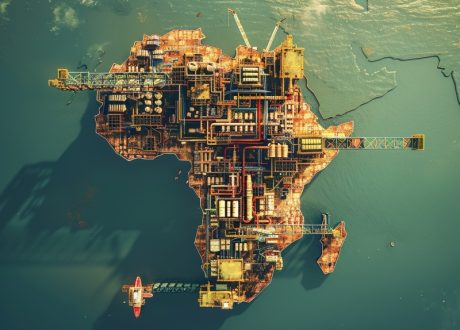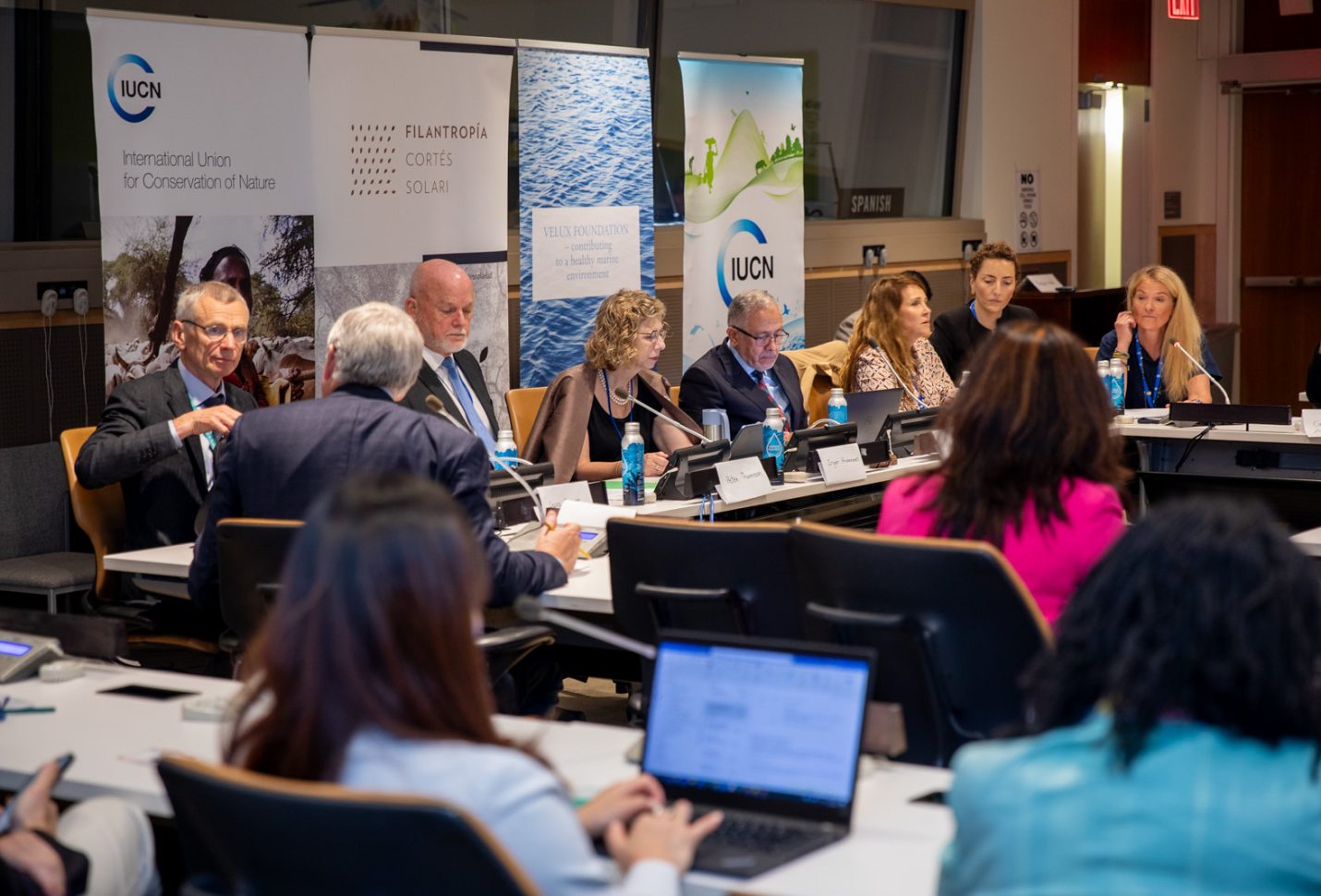
Report highlights 2 Egyptian projects among major clean energy ventures in N.Africa
A report by Energy Capital & Power highlighted two Egyptian projects – Suez Wind Power ...

United Nations Environment Program (UNEP) Executive Director Inger Anderson called for “harder, better, faster” philanthropy in three key areas; namely the Kunming-Montreal Global Biodiversity Framework (GBF), plastic pollution fight, and climate adaptation.
She made the remarks during side event of the SDG Action Weekend under the theme of “challenges and progresses of environmental philanthropy as a key player for the SDGs achievement”.
A healthy environment is the bedrock upon which sustainable development must be built; healthy oceans, a healthy climate, healthy soils and more. This bedrock is being fractured. The ground is falling away beneath the feet of the world’s poorest and most vulnerable as the bank accounts of the world’s richest grow fat with cash, she said.
This environmental degradation is why, in part, almost 90 per cent of the SDGs are off track, have shown no movement or have regressed. And this is why UNEP – as the leading global environmental authority – is laser-focused on tackling the triple crisis, she highlighted.
“Look, we have a lot of work to do. Climate change is here, now. We all see the heart-breaking impacts. The storms. The floods. The heatwaves. We are driving nature to exhaustion: losses of biodiversity and ecosystem integrity will undermine efforts on 80 per cent of assessed SDG targets. Pollution causes millions of deaths each year, human and animal,” she said.
“But we should not despair. We have the plans in place. Plans to conserve, sustainably manage and restore marine and terrestrial ecosystems. To accelerate the renewable energy transition, while ending energy poverty. To do away with pollution and waste. And so, so much more,” she underlined.
“But the best-laid plans can go wrong – particularly if they are not financed. We all know the SDGs are underfunded. SDG 14 in support of the ocean receives the least amount of long-term funding of any of the SDGs. Meanwhile, investments in Nature-based Solutions must triple by 2030 to meet climate, nature and land-neutrality targets,” she said.
“So, today, I want to talk about three underfunded areas where philanthropists can put their money, their efforts and their partnership capabilities. Areas that will dampen the triple planetary crisis. And in so doing, deliver huge sustainable development benefits,” she highlighted.
She urged boosting philanthropic work in backing the Kunming-Montreal Global Biodiversity Framework (GBF) under which the world is committed to halt and reverse biodiversity loss. Protect 30 percent of the terrestrial and marine environment. Put 30 percent of land and marine areas under restoration by 2030. Reduce nutrients introduced into the environment, reduce the risk from pesticides and hazardous chemicals, tackle invasive species and more.
Meeting these targets will require real and predictable funding – as recognized in the goal to mobilize US$30 billion to developing countries per year by 2030. This financing must pour into many areas to meet the targets, so that governments have the means of implementation the GBF calls for.
The GBF Fund was launched at the Global Environment Facility Assembly in August, with initial contributions from Canada and the UK. “We need to start filling up this fund urgently so that implementation can be in earnest.”
She called also for bolstering philanthropic work in implementing a global deal to end plastic pollution. Plastic pollution has become pervasive and pernicious. Millions of tons of plastic pollution enter marine environments each year. Harmful chemicals are posing threats to health. And the linear plastics economy is warming the climate through the emissions it generates.
The good news is that we have the zero draft of a deal to end plastic pollution on the table. Negotiators will start thrashing out the details in Nairobi in November, with a view to agreeing the deal in 2024.
“The zero draft has all the elements needed to end plastic pollution and deliver a cleaner environment, decent jobs and real business opportunities. By eliminating problematic and avoidable plastic products. By redesigning products and packaging to use less plastic and be more easily reused, refilled, repaired, repurposed and recycled. By switching to safe alternatives. By strengthening systems for environmentally sound waste management and disposal,” she said.
“I am calling on negotiators to set ambitious targets and timelines. I am calling on the private sector to start innovating, now, to design out plastics and harmful chemicals. And I am calling for the financing that will be needed to deliver the deal,” Andersen said.
“Governments and the plastics industry should lead. But there will be gaps. We need solidarity, support and funding for a just transition that puts people such as waste-pickers at the center. We need investments in solid waste management. And, of course, we need investments to clean-up the legacy pollution that will wash up on coastlines for decades to come,” the UNEP chief added.
Climate adaptation is the third area upon which philanthropic work should focus. “As I said, climate change is with already with us. Barely a day goes by without some climate change-linked event that claims lives, destroys property and devastates livelihoods,” she said.
“The world must act now on adaptation. By leaning heavily on nature. Harnessing traditional knowledge. Restoring and managing ecosystems. Reforming food systems to protect livelihoods and food security. Prioritizing early warnings and preparedness. Climate-proofing cities and infrastructure,” she said.
“We should look hard at projects that both build resilience to climate change and reduce greenhouse gas emissions. Nature-based Solutions such as restoring coastal ecosystems are particularly effective, as they sequester carbon and provide all manner of adaptation services, such as protection against extreme weather,” she added.
“To achieve this, we are going to need over US$300 billion per year by 2030. The funding gap is huge: international adaptation finance flows to developing countries are 5-10 times below estimated needs and growing. This finance must come from various sources, including philanthropy, and be directed appropriately through international and national frameworks,” she highlighted.
“Philanthropists have done a lot. But, as ever, we want more. UNEP is actively seeking deeper engagement with philanthropy,” she said.
Through UNEP and the multilateral environmental agreements and bodies UNEP hosts, Member States and others, including philanthropists, have delivered real change. Repaired the ozone hole. Phased out lead in petrol. Started to act on climate change, biodiversity loss and pollution. Multilateralism works. Philanthropy works. They work better together.
UNEP can help foundations achieve their objectives and reduce time to entry for investments. It can help foundations engage in international fora and with environmental experts. The Intergovernmental Negotiating Committee on ending plastic pollution is a case in point.
UNEP can offer foundations access to its peer networks and coalitions of partners, including UN agencies, academia and other environmental stakeholders. Partnerships between foundations and UNEP enhance advocacy, credibility and reach.
“Our collective task now is to make philanthropy work harder. Better. Faster. We are seeking a world in which sustainability, harmony and equity are not just buzzwords, but daily principles we all live by. This is not a dream. It is a vision. A plan. A goal to which we must all aspire. And reaching this goal hinges on fighting tooth and nail for a healthy environment,” she concluded.
A report by Energy Capital & Power highlighted two Egyptian projects – Suez Wind Power ...
The opening concert of the Annual Meeting 2025 in Davos-Klosters will address the pressing issues ...
Juhayna Food Industries proudly announced that its agricultural arm, El Enmaa for Agricultural Development, has ...


اترك تعليقا